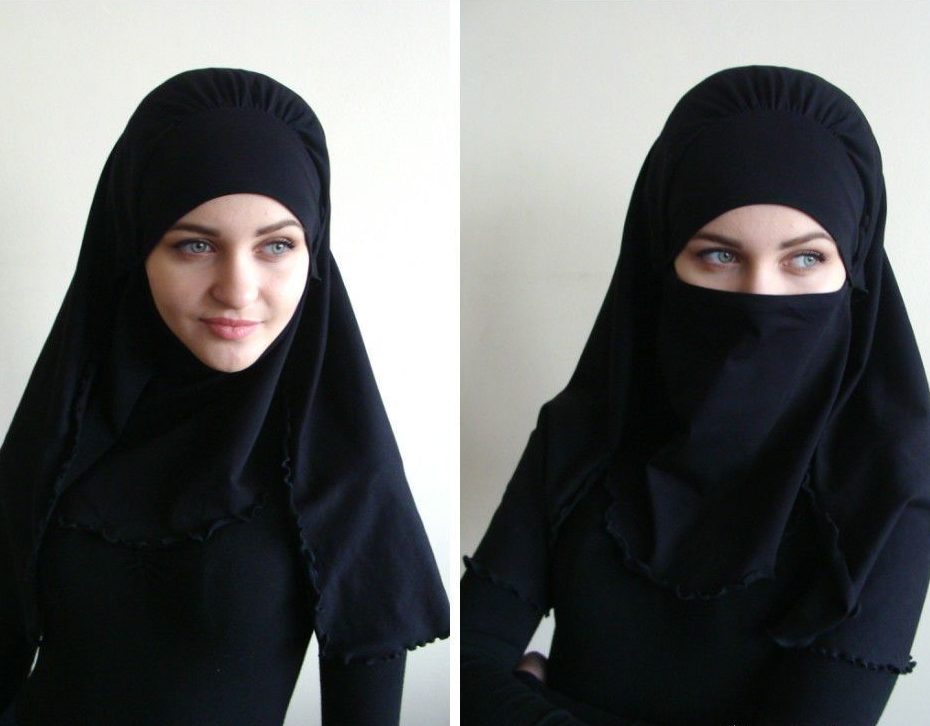 The clothes of Eastern women are not similar to the things that Europeans wear. Muslim women must wear a headscarf to cover their hair and body. They put a special meaning into it. This accessory not only covers the head, but also hides its owner from prying eyes, as required by religion. Let's try to understand the varieties of these hats.
The clothes of Eastern women are not similar to the things that Europeans wear. Muslim women must wear a headscarf to cover their hair and body. They put a special meaning into it. This accessory not only covers the head, but also hides its owner from prying eyes, as required by religion. Let's try to understand the varieties of these hats.
Types of oriental headdresses
In some countries, for example in Saudi Arabia and Iran, all women, regardless of religion, are required by law to wear hijab. More secular countries do not impose such duties. In Turkey, even until recently it was forbidden to wear this headscarf in government institutions.

Another common item in a Muslim woman’s wardrobe is niqab, completely covering the face, leaving only a small strip for the eyes. It is a headband to which two scarves are attached. The front scarf covers the lower part of the face, leaving only the eyes visible, the back scarf covers the hair.The niqab has a loose enough cut to cover the face and hair from prying eyes, but does not hamper movement.
Unlike other Arabic headdresses, it does not allow decoration. According to the Koran, it is not necessary to wear it, but despite this, the niqab has become widespread among Muslim women. Families living according to conservative canons teach girls to wear this headdress from early childhood. It gained the greatest popularity in the Persian Gulf countries, Pakistan and Yemen, perhaps also because it serves as additional protection for the face from wind, sand and the scorching sun.

Headdresses of Muslim women can be divided into two types: those that open and cover the face. The first type includes: hijab, sheila, amira hijam, khimar and veil. For the second - niqab and burqa.
Main features and differences

Hijab is a headscarf that covers the head and neck of a Muslim woman. Translated from Arabic, it literally means curtain, barrier. Hijabs are worn by Muslim women in European countries to show their religious affiliation.
Niqab - a more formal dress that covers the entire face, leaving a small strip for the eyes, which is sometimes covered with a thin cloth, like a veil. From Arabic, niqab is translated as a veil. They are most often seen on women in Yemen, Pakistan and the Gulf countries.
But these are not all the headdresses used by Muslim women. No less common are the amir hijab, sheila, khimar, and veil.
Sheila - This is a scarf, quite long and loosely tied on the head with the edges hanging from the shoulders. Women in the Gulf countries love this scarf.
Amira's hijab - a headdress consisting of two elements.First, a tight-fitting cap is put on, and on top of it is a scarf with a hole for the face. The emir's hijab should cover the neck and chest. Used by women in Central Asia and Afghanistan.
Himar - a scarf-cape that covers the head, hair, ears, shoulders and chest. The length of this cape reaches the waist line. Khimar is preferred by women from the Middle East and Turkey.
Veil – translated from Persian, tent. It is a large blanket that goes over the head and completely covers the entire body. The veil does not have any fastenings, so the woman has to hold it with her hand all the time.
Burqa – light material that completely drapes the female figure. A mesh is inserted into the eye hole to prevent others from seeing your face. The burqa is often worn in Afghanistan.



 0
0





